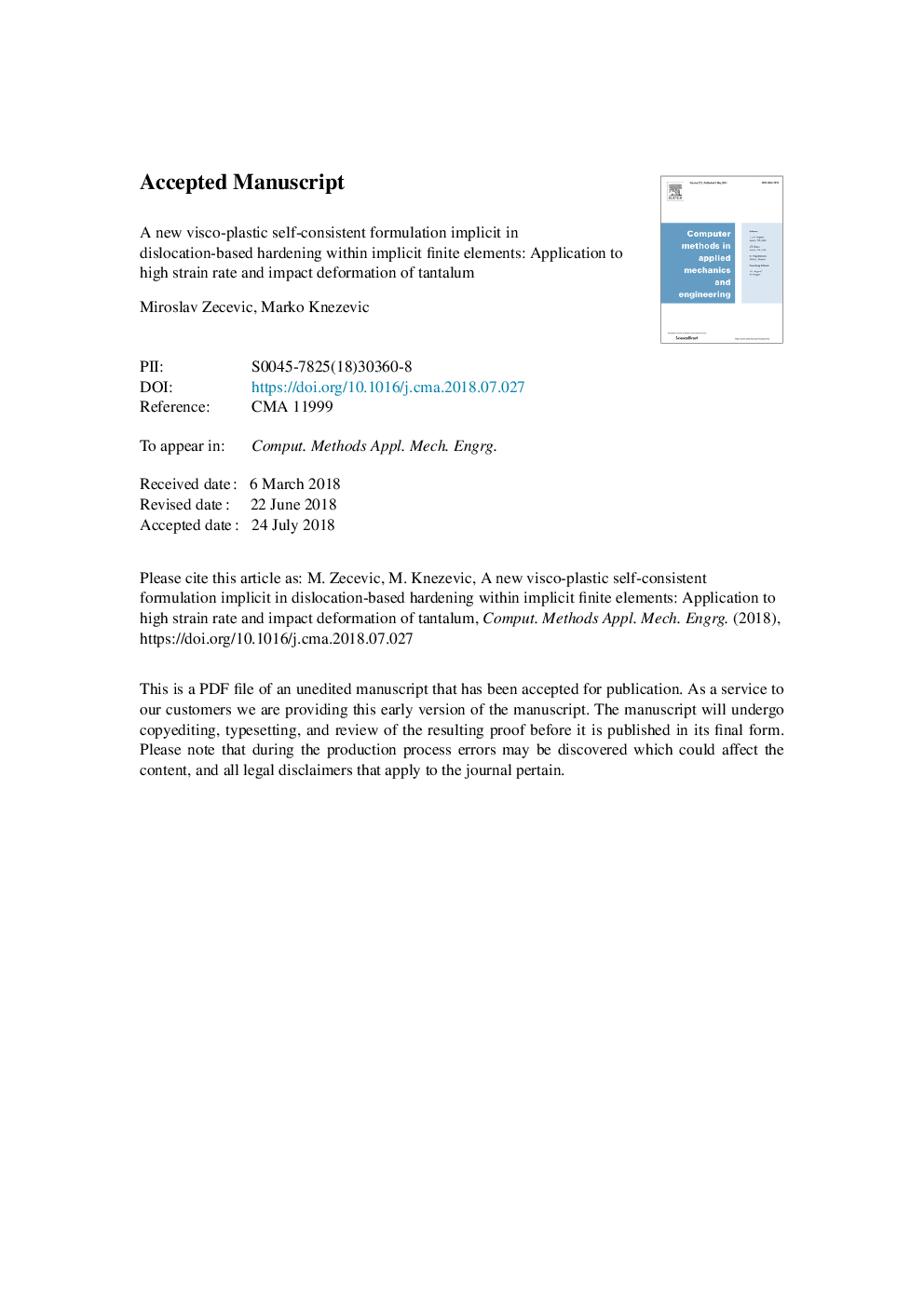| Article ID | Journal | Published Year | Pages | File Type |
|---|---|---|---|---|
| 6915293 | Computer Methods in Applied Mechanics and Engineering | 2018 | 50 Pages |
Abstract
Modeling deformation processes of materials under high strain rate and impact conditions in which the strain rates vary spatiotemporally over several orders of magnitude is challenging, especially in terms of constitutive description. Visco-plastic power-law flow rule, commonly used within crystal plasticity constitutive models, usually introduces superfluous strain rate effects, entering numerically via the slip activation criterion, which result in artificially high flow stress predictions under high strain rate deformation conditions. This paper presents a novel, implicit finite element implementation of a visco-plastic self-consistent polycrystal model that is implicit in dislocation-based hardening with removed strain rate sensitivity introduced by the power-law flow rule. In the model, the strain rate dependence of the flow stress is defined solely by the rate sensitivity of Peierls stress and the evolution of dislocation density within the hardening law, enabling the prediction of high strain rate and impact deformation. As a result, the predicted flow stress is accurate in its magnitude. The physically based strain rate and temperature sensitive model also features, in addition to Schmid, the non-Schmid activation contribution for slip, which is necessary for understanding and modeling the plastic deformation of body-centered cubic metals. The model is calibrated to simulate the strain rate- and temperature-sensitive monotonic deformation of tantalum and is subsequently applied to a Taylor impact test of the same material. Since the impact simulation required remeshing and interpolation of state variables, the spherical linear interpolation algorithm in the space of quaternions is implemented to facilitate the interpolation of texture. Predictions of the simulation were found to compare favorably with experimental measurements of post-test geometrical changes and texture evolution. The implementation and insights from these predictions are presented and discussed in the paper.
Related Topics
Physical Sciences and Engineering
Computer Science
Computer Science Applications
Authors
Miroslav Zecevic, Marko Knezevic,
